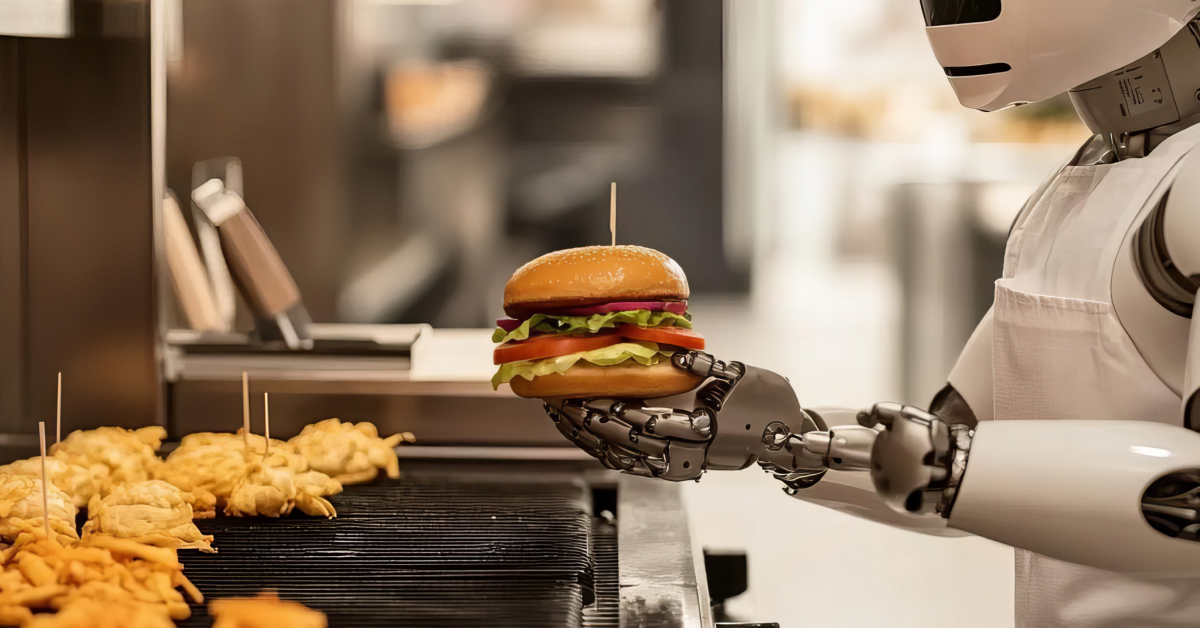Future of Grocery Stores: Prepare for The Next Decade

- December 16, 2024

Understanding Your Customers’ Needs
In the next decade, your focus should be on understanding and meeting your customers’ needs. Today’s shoppers are more informed and health-conscious than ever, and they seek personalized experiences. Investing in customer data analytics can help you tailor your offerings. By analyzing purchasing habits, you can provide targeted promotions that resonate with your shoppers.
Data-Driven Insights
Utilizing data analytics can provide insights into what products are in demand and how customer preferences are shifting. Implementing loyalty programs can further enhance your understanding of customer behavior, allowing you to create personalized marketing strategies that keep them coming back.
The Role of Technology
Technology is transforming the grocery industry, and embracing these innovations will be crucial for your success.
Advanced Grocery Store POS Systems
Modern grocery store POS systems are evolving rapidly. These systems not only handle transactions but also integrate with inventory management, customer loyalty programs, and analytics tools. With features like mobile payment options and self-checkout kiosks, you can streamline the checkout process, reduce wait times and improve customer satisfaction.
Smart Shopping Carts and Apps
Imagine offering your customers smart shopping carts equipped with GPS and scanning technology. These carts can help shoppers find products quickly and provide real-time updates on their spending. Additionally, investing in a user-friendly app that allows for online ordering and delivery can cater to those who prefer convenience over a traditional shopping experience.
Emphasizing Sustainability
Sustainability is not just a buzzword; it’s becoming a critical factor in consumers’ shopping decisions. As grocery
store owners, integrating sustainable practices can set you apart in a competitive market.
Eco-Friendly Packaging and Products
Offer a wider range of eco-friendly packaging options and locally sourced products. Consider collaborating with local farmers to provide fresh produce, supporting the community and reducing your carbon footprint. Highlighting these sustainable practices in your marketing can attract environmentally conscious consumers.
Waste Reduction Strategies
Implement waste reduction strategies in your store. This could include donating unsold food to local charities or
starting a composting program for organic waste. These efforts not only benefit the environment but also enhance your store’s image within the community.
Focus on Health and Wellness
As consumers become more health-conscious, positioning your grocery store as a health and wellness destination can drive sales.
Nutritional Transparency
Provide clear nutritional information on all products. Consider labeling foods that are organic, gluten-free, or free
from common allergens. By offering transparency, you build trust with your customers and empower them to make informed choices.
Wellness Sections and Specialized Products
Creating dedicated wellness sections featuring health foods, supplements, and organic options can cater to the growing demand for healthier alternatives. Highlighting these sections in your marketing can attract a new customer base focused on health and well-being.
Enhancing the In-Store Experience
The in-store shopping experience will be crucial in the next decade. With the rise of online shopping, creating a unique and engaging experience can drive foot traffic to your store.
Community Engagement
Consider hosting community events, such as cooking classes or product tastings. These events can help build
relationships with customers and position your store as a community hub. Collaborating with local chefs or nutritionists can also add value to your offerings.
Innovative Store Layouts
Reevaluating your store layout can enhance the shopping experience. Consider open layouts that allow for easy navigation, along with engaging displays that showcase new products. Creating an inviting atmosphere encourages customers to spend more time in your store.
Embracing E-Commerce
The rise of e-commerce is reshaping the grocery landscape, and integrating online shopping with your physical store will be essential.
Seamless Online Shopping
Investing in a robust online platform that offers an easy shopping experience is key. Ensure your website is user-friendly and mobile-compatible, allowing customers to shop from anywhere. Offering curbside pickup and delivery options, it can cater to busy lifestyles, making your store more accessible.
Omnichannel Strategies
Implement an omnichannel approach that allows customers to switch between online and offline shopping seamlessly. For example, customers could order online and pick up their groceries in-store, combining convenience with the tactile experience of shopping.
Preparing for the Future
As we look ahead, it’s vital for grocery store owners to remain flexible and open to change. The future of grocery stores will be shaped by your ability to adapt and innovate.
Continuous Learning and Adaptation
Stay informed about industry trends and emerging technologies. Attend trade shows, engage with industry experts, and participate in webinars to keep your knowledge up to date. Being proactive in your approach will allow you to make informed decisions that align with customer expectations.
Building a Strong Community Presence
Remember that your store is part of a larger community. Building relationships with your customers and local businesses can create a loyal customer base. Engage with your community through social media and local events to foster a sense of belonging.
Transform Grocery Shopping
The upcoming decade presents a remarkable opportunity for grocery store owners ready to adapt and innovate. As consumer preferences shift, keeping pace with emerging trends will empower you to not just survive, but truly excel in a competitive landscape.
Prepare to lead the charge — your customers are eager for a fresh, personalized shopping journey that only you can deliver!
FAQs
1. What specific technologies should I consider investing in for my grocery store?
Consider investing in advanced Point of Sale (POS) systems that integrate inventory management, customer loyalty programs, and analytics tools. Additionally, look into smart shopping carts, mobile payment options, and user-friendly e-commerce platforms to enhance the shopping experience.
2.How can I effectively implement a loyalty program that drives customer engagement?
Start by collecting customer data to understand their preferences. Offer personalized rewards based on purchasing habits and promote the program through in-store signage and social media. Regularly communicate with participants about exclusive offers and benefits to keep them engaged.
3. What are some cost-effective ways to integrate sustainability into my grocery store?
Begin by using recyclable or biodegradable packaging, reducing plastic use, and sourcing products from local farmers. Implement waste reduction strategies, such as donating unsold food, and educate staff and customers about sustainability efforts to build support for these initiatives.
4. How can I measure the success of my in-store experience improvements?
Use customer feedback surveys and in-store analytics to gauge satisfaction. Monitor sales data, foot traffic, and social media engagement to assess the impact of changes. Consider conducting regular focus groups to gather qualitative insights on customer experiences.
5. What strategies can I use to stay informed about emerging grocery industry trends?
Subscribe to industry publications, join professional associations, and participate in trade shows and webinars. Networking with industry experts and peers can provide valuable insights. Additionally, leverage social media and online forums to stay updated on consumer preferences and market shifts.
























